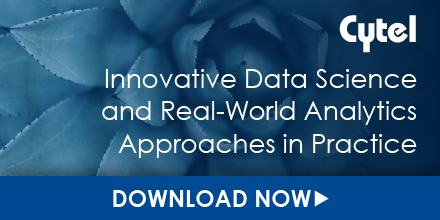Advancing Medicines Development with External Controls


In place of collecting data from patients recruited for a trial who have been assigned to the control or standard-of-care arm, an external control creates a comparator arm using either real-world data-sets such as electronic health records or previous clinical trials. The external control offers a practical, effective way to leverage real-world evidence and has been applied in regulatory approvals. In this blog, we share an illustrative example of how we can help customers in this emerging area of interest.
Development Challenge
Our customer is a specialized biopharmaceutical company, developing novel therapies. Their breakthrough therapy had the potential to be first-in-class for a rare and aggressive cancer and had shown great potential in earlier clinical trials. In areas of high unmet need, it is critical to bring vital new medicines to patients faster, yet conventional development pathways involving multiple stages can be slow, expensive, and inefficient.
In many breakthrough treatment areas, where the patient population is small, or there is overwhelming evidence of efficacy at Phase 2, it has become common for drugs to be approved based on a pivotal single arm trial – however, this is not always optimal. With this in mind, our customer planned a registration pathway based on a single arm registrational study with a comparison to an external control.
Cytel Solution
Creating an external control requires advanced statistical expertise to effectively distribute the baseline characteristics between the external control arm and the arm receiving the experimental treatment.
The client acquired databases from several leading cancer centers and planned to combine this with data from earlier clinical trials to form a retrospective trial as a comparison to one of their single arm pivotal trials.
They approached Cytel to help identify the best statistical and analytical methods and deliver the analysis based on the acquired real-world data. The solution comprised:
Data Cleaning and Curation
Combine, cleaning and standardizing datasets from the oncology databases and the prior clinical trials for the retrospective analysis.
Analyses for Pivotal Trial
Summarize the data from the cleaned and pooled retrospective dataset
Divide single arm trial data and retrospective dataset into groups (by refractory category and ECOG status) and perform a weighted average
Propensity score matching with bootstrap confidence intervals to equalize the groups and examine the average treatment effect
Increasingly complex propensity score matching using AIPWCC estimators for survival analysis producing Kaplan-Meier type graphs adjusted for covariates
Analysis for Regulatory Responses and Health Economic Insights
Create different analyses over the course of several months to respond to regulatory requests
Examine numbers of post-refractory treatments to inform health economic insights
Outcomes
The analysis is instrumental in streamlining the approval pathway for the experimental treatment.
Are you interested in other applications of data science techniques and real-world analytics? Download our ebook via the button below.


